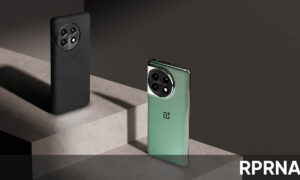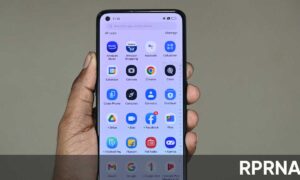Citra for Android is a Nintendo 3DS emulator that you can install from the Google Play Store and has been under development for a long time. With the unofficial Citra port that launched 3DS emulation on Android, we have come a long way in making it possible to play 3DS games on your phone. Now, the popular 3DS emulator is getting one of the most requested features, which can significantly improve the performance.
The latest beta version of Citra for Android brings shader cache support, which is a huge boon to emulation performance. Shader cache effectively stores all the compiled shades in your device’s storage, removing much graphical load from your phone’s GPU.
JOIN OUR ANDROID 11 CHANNEL ON TELEGRAM
Once a shader has been compiled, Citra will read from your phone storage the next time it is needed, without recompiling it. If you repeatedly stutter while playing the game, you should fix it now if you created a large shader cache without playing for a while.
When tested on both the Xiaomi Mi11 Ultra and the OPPO Find X3 Pro, the difference is quite noticeable. You will see that there is a very serious slowdown in some areas, but it appears when the shader is compiled and saved to devise storage. After you rejoin the same action or enter the same area that caused the decline, you will see that it runs erratically.
Beta 15 changelog:
- Implements a GPU shader cache, which improves performance and reduces framerate “stuttering”.
- Fixes various GPU related crashes.
- Merges latest fixes & improvements from upstream Citra.
This is most noticeable on Pokemon X when crossing the bridge from Aquacard Town. The game freezes for a few seconds, however, it runs erratically when crossing back and forth. This is because the shades used in the latter part of the game freeze the game while compiling and freeze when it is finished. If you skip once and for all in the video above, it moves at full 100% speed.
The best thing about shader caches is that you can save them and transfer them to new devices, although they contain copyrighted material and should not be shared with others. They are stored in the Citra-Emu folder in your phone storage and keep in mind that using the on-device shader will damage the storage speed of your smartphone.

Even if you need to decrypt your own 3DS ROM using your own Nintendo 3DS to play the game on your smartphone, you need to install Citra Beta 15 from the Google Play Store to try it out. A common thing for people is to back up their shader cache while using Citra on their PC so that if they want to come back to play the game in the future, the game runs almost flawlessly, thanks in advance – the compiled shaders emulator is used.
A shader cache is enabled by default in Citra and Animal Crossing: both New Leaf and Pokemon X have already significantly improved performance from my test. It definitely helps that I am using the flagship Qualcomm Snapdragon 888 device with fast storage, users at Reddit have reported performance improvements even on vulnerable devices. Your mileage varies but for now, performance on non-Qualcomm chipsets is still poor.
If your smartphone has a Mali GPU (found in Kirin and Exynos SoC), then you might want to try the unofficial Citra MMJ, as there are many modes and patches that can be used specifically for greater performance. For example, Shader Cache is already implemented in Citra MMJ.
However, if you like what you saw in the video above, be sure to try the official emulator. The Citra is much more than the previous one, and as smartphones become more powerful, the 3DS emulation is just as good as the Nintendo DS emulation these days.
















